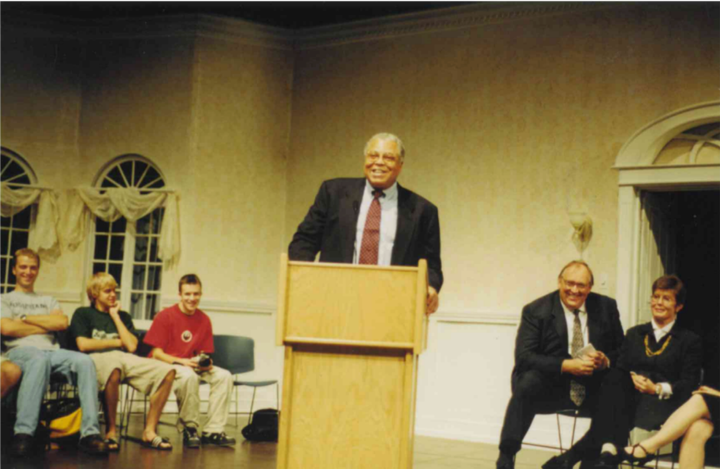Artist preserves memories with household fossils
MARIANA LOPEZ
milopez15@ole.augie.edu

Erica Merchant’s art exhibition “Fossilized Reflections” opened Thursday, Feb. 8 at Augustana’s Eide/Dalrymple Gallery, showcasing sculptures which bring Merchant’s view of memories as “a fossilized narrative” to life using materials ranging from wood, ceramic and yarn to crushed up crayons, shoes and VHS tapes.
Merchant’s work portrays everything that is lost, in both fossilized remains as well as human memories, due to the passing of time, leaving what remains to be determined only by serendipity. Merchant believes fossils take part in the present by being discovered, as memories from the past partake in people’s lives when they are remembered.
The 2010 mixed media sculpture titled, “She Was Three,” serves as a compendium of Merchant’s vision. The piece is made of horizontal (and a few diagonal) layers of various materials. Many of the materials can all be found in the household, including the backyard. Spectators can feel what it would be like to touch the painting, because they have already held many of the materials in their hands.
Crushed or shredded together into multiple layers, the materials looked as if they had gone through the process of sedimentation.
This work brings a variety of materials together to form a larger picture, a life story remembered through the items left from a time now gone. It perfectly portrays Merchant’s perspective of accidental remembrance. Just as she did not know what would be left of the memories of her daughter’s upbringing, we don’t know what will be left to remember our lives. This piece can make anyone wonder what those will be.
Another standout mixed media piece is Merchant’s, “The Webs We Weave #2.” This sculpture has the form of spider webs enclosed in a rectangular wooden frame. They are painted with bright reds, yellows, blues and various earth tones, making the rocks look like crystals. The background is a dim rainbow of short curved and colored strokes, with the addition of a black painted hand at the bottom right corner.
The piece successfully portrays the exhibition’s message, but with a twist. Instead of bringing different memories together with layers, they are intertwined in a web. Although the point is clear, and the focal point of the artwork is well made, the piece is cheapened by the background, which looks like it is only there because Merchant would not, or could not, come up with anything truly creative.
The outlier of the exhibition is without a doubt the 2015 work “In Utero.” The bright pink rectangular piece showcases round bumps with volcano-like openings, which are located in the entire space except some of the top left corner. Even if one understands the title, which translated from Latin to English means “in the uterus,” this piece doesn’t actively convey a message, much less the message of the overall exhibition.
More than anything, it’s the flashing color that separates it from the other earth-toned colored pieces. So much so, that it made me wonder, “What is this doing here?” This piece interrupts the flow of Merchant’s message, and the exhibit would have been better without it.
Merchant’s artwork is created through different techniques, a large array of both common and uncommon materials, but most interesting of all, they are full of traces of the past. This exhibition is a sight which should be experienced and can only be given justice with the naked eye. The gallery reception will take place Friday, Feb. 16 from 7 to 9 p.m. and the exhibit will run until March 8.



